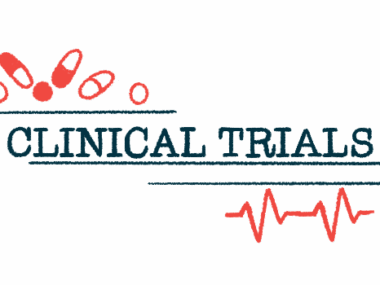Uplizna effective in patients with or without genetic variant: Data
Clinical trial information used to evaluate treatment responses
Written by |

Uplizna (inebilizumab) prevented disease attacks for people with neuromyelitis optica spectrum disorder (NMOSD) regardless of whether they had a genetic variant in the FCGR3A gene that’s associated with reduced efficacy of rituximab, a therapy commonly used off-label for NMOSD.
That’s according to additional data analyses from the Phase 2/3 N-MOmentum clinical trial (NCT02200770) that previously showed that Uplizna was superior to a placebo at lowering attack rates and slowing disability progression in adults with NMOSD.
While both Uplizna and rituximab work by killing B-cells — a type of immune cell involved in NMOSD — they do so through distinct mechanisms, which may explain the observed efficacy difference in regard to the genetic variant.
The new results were published in the Annals of Clinical and Translational Neurology in the form of a brief communication, titled “Inebilizumab reduces neuromyelitis optica spectrum disorder risk independent of FCGR3A polymorphism.”
“These findings offer important insight into some of the mechanistic differences between Uplizna and other B-cell-depleting therapies,” Kristina Patterson, MD, PhD, the senior medical director of neuroimmunology medical affairs at Amgen, which markets Uplizna, and a study author, said in an emailed statement to Neuromyelitis News. “We are pleased that Uplizna showed consistent results among study participants living with this [genetic variant] in reducing NMOSD attacks.”
Horizon Therapeutics, the original seller of Uplizna, was recently acquired by Amgen.
Rituximab used off-label to treat NMOSD
In NMOSD, B-cells produce self-reactive antibodies that target and attack healthy cells of the nervous system. In most cases, these antibodies target the aquaporin-4 (AQP4) protein.
Rituximab, which is used off-label to treat NMOSD, targets the CD20 protein on the surface of B-cells, while the approved NMOSD therapy Uplizna targets another B-cell surface protein called CD19.
The main difference is that CD19 is found at high levels on plasma cells, which produce the largest number of antibodies, while CD20 is present at low levels in this subset of cells.
After binding to their target proteins, both therapies are thought to cause B-cells to die through a process called antibody-dependent cell-mediated toxicity (ADCC). Certain immune cells contain a surface protein called CD16a that binds to antibodies bound to cells, thereby initiating an immune cascade to kill the cells.
A genetic variant common in the general population, or a polymorphism, in the FCGR3A gene that encodes CD16a affects how well the surface protein binds to antibodies. While the less common V158 variant has a higher binding affinity for antibodies, the F158 variant has a lower affinity.
Previous research indicated that rituximab-treated NMOSD carrying two copies of the F158 variant were at a 5.5 times higher risk of a disease attack than those with two copies of V158.
N-MOmentum clinical trial data used to look at treatment responses
Now, the scientists examined data from the previous N-MOmentum clinical trial — whose data supported Uplizna’s approval for NMOSD — to evaluate whether the FCGR3A polymorphism affected treatment responses.
The study enrolled 230 adults with NMOSD who were randomly assigned to receive intravenous (into-the-vein) infusions of either Uplizna or a placebo on days 1 and 15 and were monitored for about six months. This was followed by an extension phase in which all participants received an Uplizna infusion every six months.
Trial results indicated that Uplizna prevented disease relapses and disability worsening compared with a placebo.
In the recent analysis, researchers looked at responses to treatment among the subset of participants who had consented to genetic testing, including 104 people originally assigned to Uplizna and 38 given a placebo.
Among them, 14 (10%) had two copies of V158 (VV), 68 (48%) had two copies of F158 (FF), and 60 people (42%) had one copy of each (VF). Clinical and demographic features were generally similar between the groups.
For patients living with NMOSD for at least four years prior to the study’s start, prestudy annual attack rates were significantly higher and disability progression was significantly faster among those carrying at least one copy of the V158 variant than in FF patients.
Also, there were no major differences in B-cell depletion between the groups throughout the trial duration.
As previously reported, the risk of relapse with Uplizna was also similar between groups, with VV patients experiencing an average of zero attacks, the VF group an average of 0.1 attacks per year, and FF patients an average of 0.06 attacks. Disability progression also did not differ between groups over the course of the study.
“This analysis suggests that the beneficial effects of long-term [Uplizna] treatment offers consistent efficacy for patients regardless of FCGR3A polymorphism,” the researchers wrote.
This could be partly due to Uplizna’s ability to target multiple subsets of antibody-secreting cells, but also because it was engineered to have a chemical modification called afucosylation that increases by up to 10 times the affinity for CD16a.
“It is encouraging to see that Uplizna’s afucosylation enhances affinity for CD16A (FCGR3A), a [immune cell] receptor that is essential for antibody-dependent cytotoxicity, an essential part of the action of Uplizna in achieving B-cell depletion,” Brian Weinshenker, MD, another of the study’s authors and a professor at the University of Virginia School of Medicine, told Neuromyelitis News.
“Aside from the broader spectrum of B-cells depleted by Uplizna, the data in our recent paper offer an additional reason as to why Uplizna may provide additional benefit to patients even if rituximab has been inadequately effective,” Weinshenker added.
Still, due to the relatively small number of patients and exploratory nature of the analysis, “future prospective studies [those following patients over time] will be necessary,” the researchers wrote.






